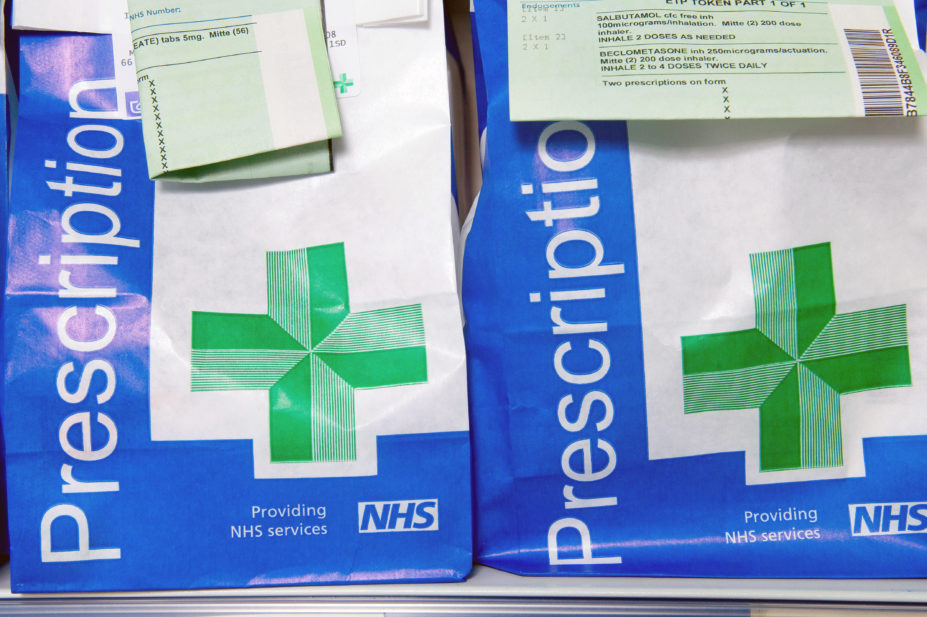
medpics / Alamy Stock Photo
Hospital trusts in England could begin testing electronic prescription service (EPS) systems “in autumn 2021”, following a small pilot of the service in secondary care in 2020, a statement from NHS Digital has said.
The secondary care EPS scheme aims to enable hospital outpatient prescriptions to be sent electronically to patients’ nominated community pharmacy.
The service was briefly piloted in June and July 2020 in three hospital trusts using the TPP computer system to “support COVID-19 outpatients” and to support its use in “hospitals and other settings in the future”.
In a statement to The Pharmaceutical Journal on 27 July 2021, a spokesperson for NHS Digital said that it is continuing “to support system suppliers to provide EPS capability to enable a ‘first of type’ in secondary care”, adding that suppliers “have significant development work to undertake”.
“We expect ‘first of type’ to commence in autumn 2021, although this remains dependent on system supplier and trust timelines,” the statement said.
According to NHS Digital, ‘first of type’ is an IT development stage, during which test cases are chosen to try out the first iteration of new capabilities.
“Availability across all hospitals is dependent on the availability of systems that are compliant with EPS and hospitals adopting these systems or upgrading their existing system,” the spokesperson added.
The NHS Digital website notes that all hospital trusts will need to use dictionary of medicines and devices (dm+d) and product-based prescribing before implementing EPS. All users will also need to have smartcards with roles and access rights for EPS.
In May 2021, Joanne Lambe, EPS product owner at NHS Digital, updated attendees of the Clinical Pharmacy Congress on plans for the service’s rollout to secondary care, saying that smartcards and a pin will be used to create digital signatures for prescriptions.
“This is the same pin that [staff members] use to authenticate and login to their clinical system,” she said. “It’s not another pin that they need to remember.”
In addition to enabling hospital outpatient prescriptions to be sent electronically to nominated community pharmacies, Lambe said: “For the first time we will allow private prescriptions, these are going to be those prescriptions that you send to home care providers.”
However, unlike phase four of the primary care EPS scheme, hospital prescribers will not be able to send prescriptions to community pharmacies that have not been nominated by the patient.
Instead, if the nominated pharmacy is not convenient, “then a new pharmacy can be searched and selected — we call this one-off nomination,” Lambe said.
EPS systems in secondary care will also support electronic repeat dispensing “for up to a period of 12 months,” she added.
Once ‘first of types’ have been completed, Lambe said that hospital IT system suppliers “will then be given what we call full roll-out approval, which gives them the ability to nationally deploy their products to all of their customers”.
Commenting on the ‘first of type’ target date, David Campbell, a member of the Royal Pharmaceutical Society’s Hospital Expert Advisory group, said: “EPS will help to ensure that patients, particularly those who live geographically remote to hospital sites and those who find it most difficult to travel (or who are isolating), can receive their medicines promptly from their own local community pharmacy without long and unnecessary journeys to hospital to collect their medicines.
“This will also help reduce hospital footfall at a time of increased necessity from a control of infection perspective, which is especially important for vulnerable patients,” he said.
Campbell added that EPS in secondary care “will also help develop further the relationships and interdependencies between different sectors of the pharmacy profession across local systems, building on the progress being made through adoption of other things such as the discharge medicines service (DMS)”.
“Finally it means that, as many medicines can be dispensed outside of hospital pharmacy departments, the capacity created and therefore priority can be given by hospital pharmacy teams to patients on wards where clinical needs are likely to be greatest.”
The DMS launched on 15 February 2021, with patients referred to community pharmacy after being discharged from hospital, where pharmacy staff compare the medicines prescribed at discharge with those taken before admission to ensure that medicines awaiting collection are still appropriate.
READ MORE: Paper prescriptions will be a rare sight by next year, says NHS Digital programme lead


